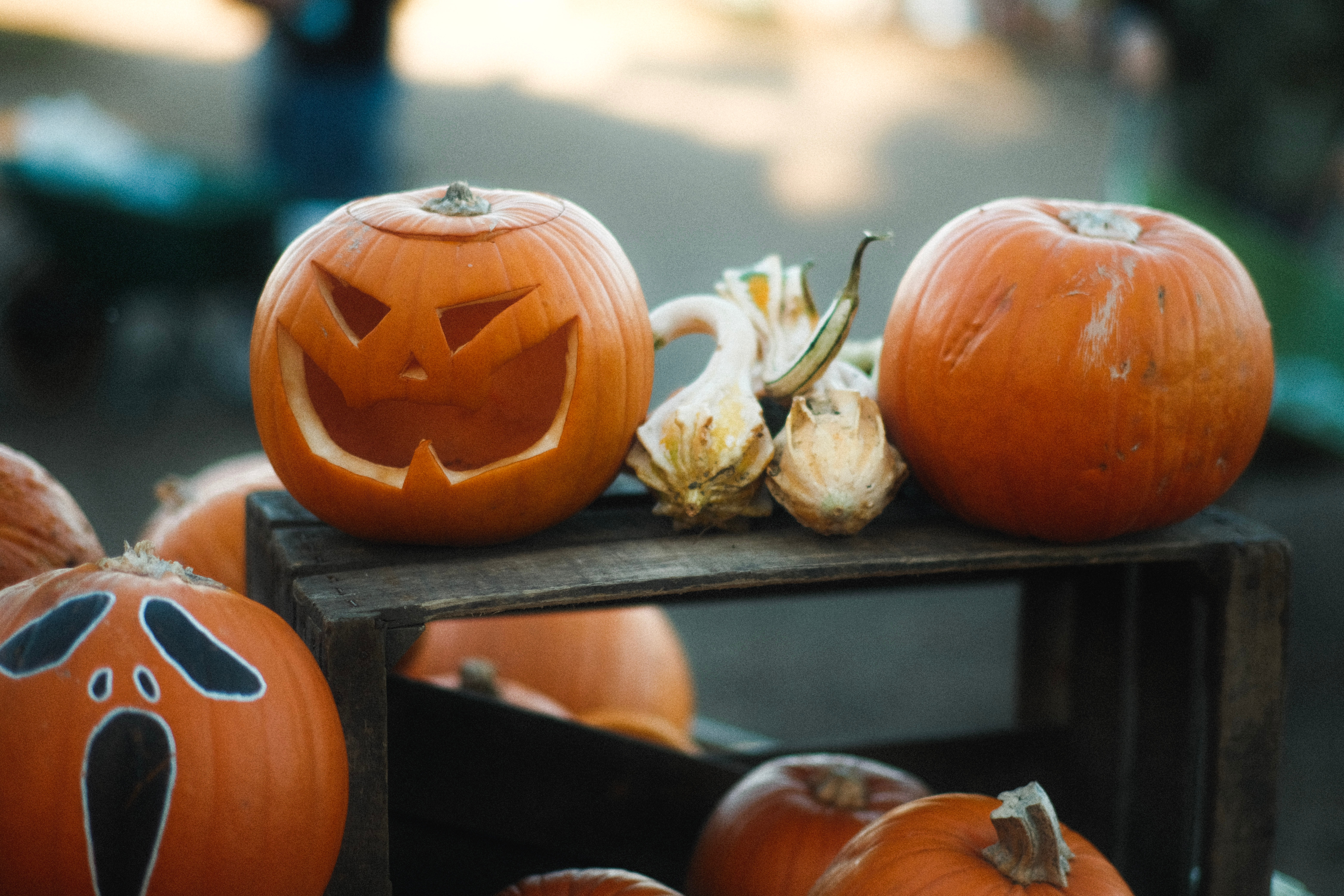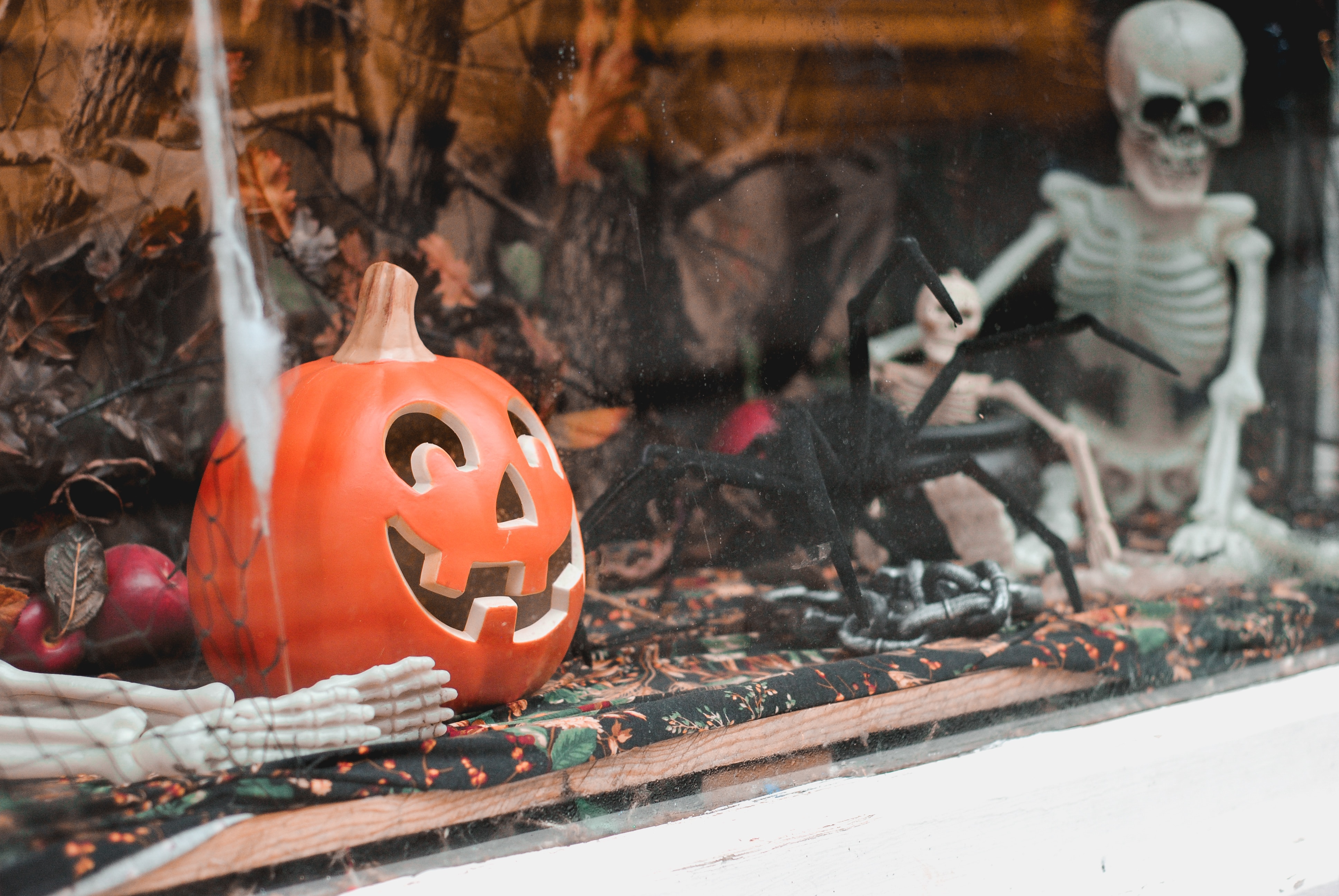
A Hauntingly Good Playlist: Halloween Music for Your Spooky Soiree

The Science of Fear: Why Do We Love Being Scared on Halloween?

Ghostly Legends: The Most Famous Haunted Places in America

Halloween and Environmental Sustainability: Green Tips for a Greener Holiday

The Role of Black Cats in Halloween Superstitions and Myths

Halloween Party Planning: Tips for a Fangtastic Night

Halloween Party Planning: Tips for a Fangtastic Night

Halloween Party Planning: Tips for a Fangtastic Night

Shop Sales and Discounts Keep An Eye Out For Sales and Discounts

The Best Personalised Christmas Gifts

Halloween and Environmental Sustainability: Green Tips for a Greener Holiday
Halloween and Environmental Sustainability: Green Tips for a Greener Holiday
As the spooky season approaches, Halloween enthusiasts are gearing up for a frightfully fun time. From haunted houses to creative costumes and delicious treats, Halloween offers a unique opportunity for people of all ages to embrace their playful and imaginative sides. However, amidst the festivities, it's crucial to consider the impact of this holiday on our environment.
Halloween, like many other holidays, can generate a substantial amount of waste and contribute to environmental problems. From disposable decorations to single-use plastic costumes, the environmental footprint of Halloween is often scarier than the scariest ghost stories. But fear not! In this blog post, we'll explore some green tips and tricks to help you celebrate Halloween while minimizing your ecological impact.
The Ghoulish Side of Halloween Waste
Before we dive into the green tips, let's take a closer look at the environmental challenges associated with Halloween:
1. Single-Use Costumes: Halloween costumes are often made from cheap, disposable materials like plastic. These costumes are worn once and discarded, contributing to the ever-growing problem of textile waste.
2. Plastic Decorations: Many Halloween decorations, such as plastic pumpkins and spider webs, are designed for short-term use and are often discarded after the holiday.
3. Excessive Packaging: Candy and Halloween-themed treats are typically packaged in plastic wrappers and containers, which can quickly accumulate in landfills.
4. Energy Consumption: Elaborate Halloween light displays and decorations can increase electricity consumption, adding to your carbon footprint.
5. Food Waste: Halloween parties and gatherings often lead to excess food waste, from pumpkin carving leftovers to uneaten candy.
Now that we've identified the issues, let's explore how you can make Halloween more sustainable without sacrificing the fun.
Eco-Friendly Halloween Costume Ideas
Choosing an eco-friendly costume is a fantastic way to reduce your Halloween footprint. Here are some creative costume ideas that won't harm the environment:
1. DIY Costumes: Get crafty and create your costume using items you already have at home or thrifted clothing. It's a fun and sustainable way to showcase your creativity.
2. Swap or Borrow: Consider swapping costumes with friends or borrowing from previous years. You'll save money and reduce the demand for new costumes.
3. Natural Materials: Opt for costumes made from natural, biodegradable materials like cotton, hemp, or bamboo. These materials break down more easily in landfills than synthetic fabrics.
4. Upcycled Costumes: Transform old clothing into Halloween costumes by adding a few creative touches. For instance, an old white sheet can become a spooky ghost costume with a little imagination.
Eco-Friendly Halloween Decorations
When it comes to decorating your home for Halloween, there are plenty of eco-friendly options to consider:
1. Natural Decor: Use natural elements like pumpkins, gourds, and hay bales for decorations. These items are biodegradable and can be composted after the holiday.
2. LED Lights: If you must use lights for your Halloween display, opt for energy-efficient LED lights. They consume less electricity and last longer than traditional incandescent bulbs.
3. Reusable Decorations: Invest in durable decorations that can be reused year after year. Look for items made from sustainable materials like wood or metal.
4. DIY Crafts: Get creative and make your decorations using recycled materials. For example, empty glass jars can be painted and turned into spooky lanterns.
Sustainable Trick-or-Treating
Trick-or-treating is a Halloween tradition loved by kids and adults alike. To make it more environmentally friendly, consider these tips:
1. Reusable Bags or Buckets: Instead of using disposable plastic bags, opt for reusable totes or buckets for collecting candy. These can be used for years to come.
2. Eco-Friendly Candy Choices: Look for candy brands that use eco-friendly packaging or choose candies in bulk to reduce packaging waste. You can also consider handing out non-food items like stickers or small toys.
3. **Support Local**: Visit local stores or farmers' markets for your Halloween treats. Supporting local businesses can reduce the carbon footprint associated with shipping.
4. Candy Swap: After Halloween, organize a candy swap with friends or family. This way, you can trade unwanted candies, reducing overall waste.
Mindful Pumpkin Carving
Pumpkin carving is a cherished Halloween tradition, but it can generate a lot of waste. Here's how to make it more sustainable:
1. Use the Whole Pumpkin: Don't let any part of your pumpkin go to waste. Roast the seeds for a tasty snack and use the flesh for pumpkin recipes like pies or soups.
2. Composting: When your pumpkin inevitably starts to decompose, compost it instead of sending it to the landfill. Pumpkins are excellent compost material.
3. Carve Less: Consider carving fewer pumpkins or using paint and markers instead of carving, which can extend the life of your pumpkins.
Sustainable Halloween Parties
If you're planning a Halloween party, you can also take steps to make it more eco-friendly:
1. Digital Invitations: Send digital invitations instead of paper ones to reduce paper waste.
2. Zero-Waste Decor: Decorate with reusable or upcycled items, and encourage guests to use real dishes and utensils instead of disposable ones.
3. Eco-Friendly Snacks: Serve sustainable snacks and beverages, and minimize food waste by planning portions carefully.
4. Costume Contest: Host a costume contest with an eco-friendly twist, rewarding creativity and sustainability in costume choices.
Recycling and Disposal
After the Halloween festivities are over, it's essential to dispose of waste properly:
1.Recycle: Separate recyclables like cardboard, paper, and certain plastics from your Halloween waste. Check local recycling guidelines for specifics.
2. Compost: Compost any organic materials, such as food scraps, pumpkin remains, and natural decorations.
3. Donation: If you have gently used costumes or decorations, consider donating them to a local charity or thrift store.
4. Proper Disposal: Dispose of any non-recyclable or non-compostable items in the appropriate trash bin.
Conclusion
Halloween is a time for spooky fun and creativity, and it's also an opportunity to show our commitment to environmental sustainability. By making mindful choices when it comes to costumes, decorations, and celebrations, we can reduce the environmental impact of this holiday while still enjoying all the thrills and chills it has to offer. So, let's make this Halloween a greener and more sustainable one for our planet and future generations to come. Happy Halloween, and remember: sustainability is not a trick; it's a treat for us all!